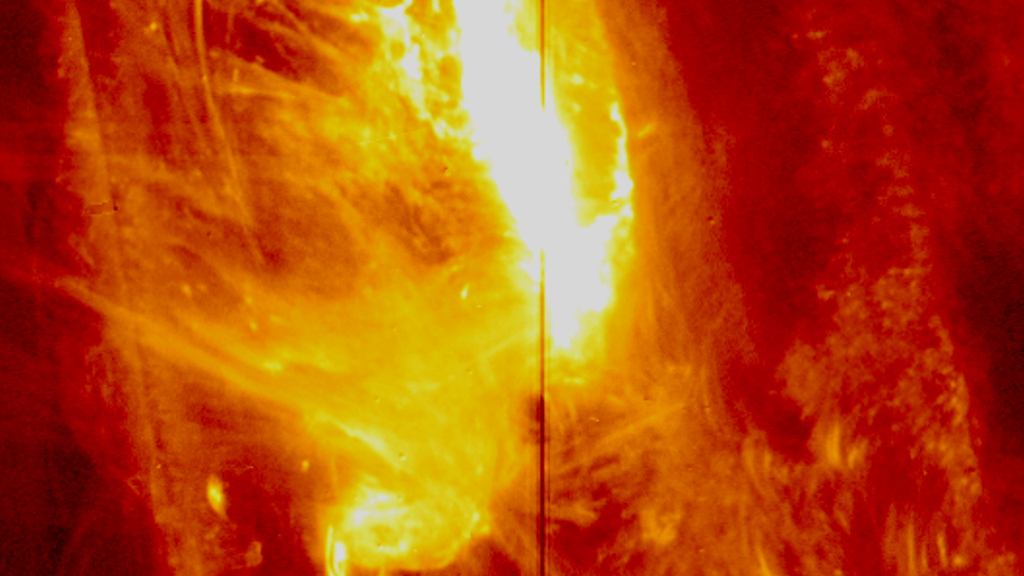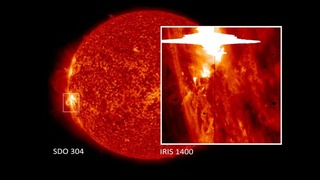Sun
ID: 11467

On January 28, 2014, NASA's Interface Region Imaging Spectrograph, or IRIS, spacecraft saw its strongest solar flare since it launched in 2013. Solar flares are bursts of X-rays and light that stream out into space, but no one yet knows the fine details of what sets them off. By observing a layer of the sun’s lower atmosphere called the chromosphere, which helps regulate how energy and material flows up from the sun's surface, IRIS can see part of the process that powers these events. However, there's a bit of luck involved in making such observations. IRIS’s instruments can’t look at the entire sun at once, so scientists must decide what areas might be the most interesting to watch. On January 28, scientists focused IRIS’s telescope and imaging spectrograph on a magnetically active region on the sun. Perfect timing: They witnessed a medium-sized solar flare in the act of erupting. Watch the video to see the flare through IRIS's eyes.



Deconstructing The Sun




Related Story
For More Information
Story Credits
Lead Visualizer/Animator:
Tom Bridgman (Global Science and Technology, Inc.)
Narrator:
Karen Fox (ADNET Systems, Inc.)
Producer:
Genna Duberstein (USRA)
Lead Scientists:
Adrian Daw (NASA/GSFC)
Bart De Pontieu (Lockheed Martin Solar and Astrophysics Lab)
Lead Writer:
Karen Fox (ADNET Systems, Inc.)
Tom Bridgman (Global Science and Technology, Inc.)
Narrator:
Karen Fox (ADNET Systems, Inc.)
Producer:
Genna Duberstein (USRA)
Lead Scientists:
Adrian Daw (NASA/GSFC)
Bart De Pontieu (Lockheed Martin Solar and Astrophysics Lab)
Lead Writer:
Karen Fox (ADNET Systems, Inc.)
Please give credit for this item to:
NASA's Goddard Space Flight Center
NASA's Goddard Space Flight Center
Short URL to share this page:
https://svs.gsfc.nasa.gov/11467
Keywords:
DLESE >> Narrated
SVS >> App
NASA Science >> Sun
https://svs.gsfc.nasa.gov/11467
Keywords:
DLESE >> Narrated
SVS >> App
NASA Science >> Sun








